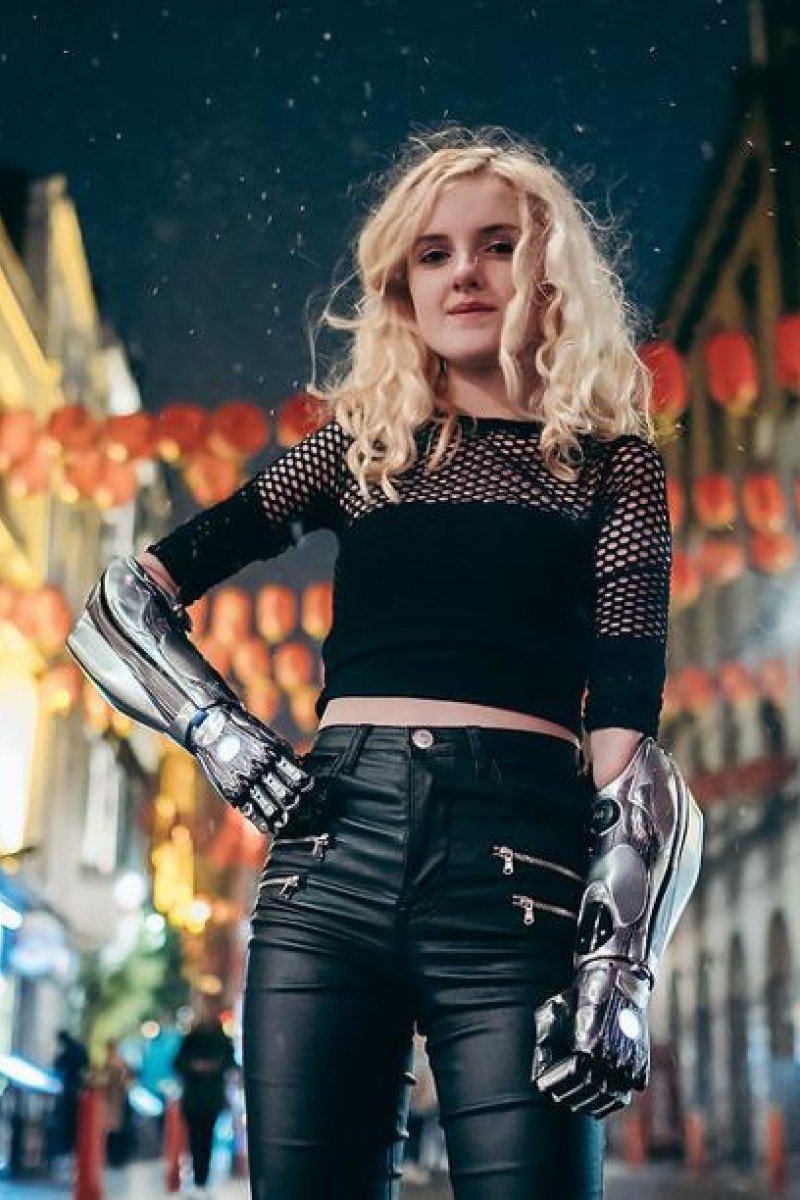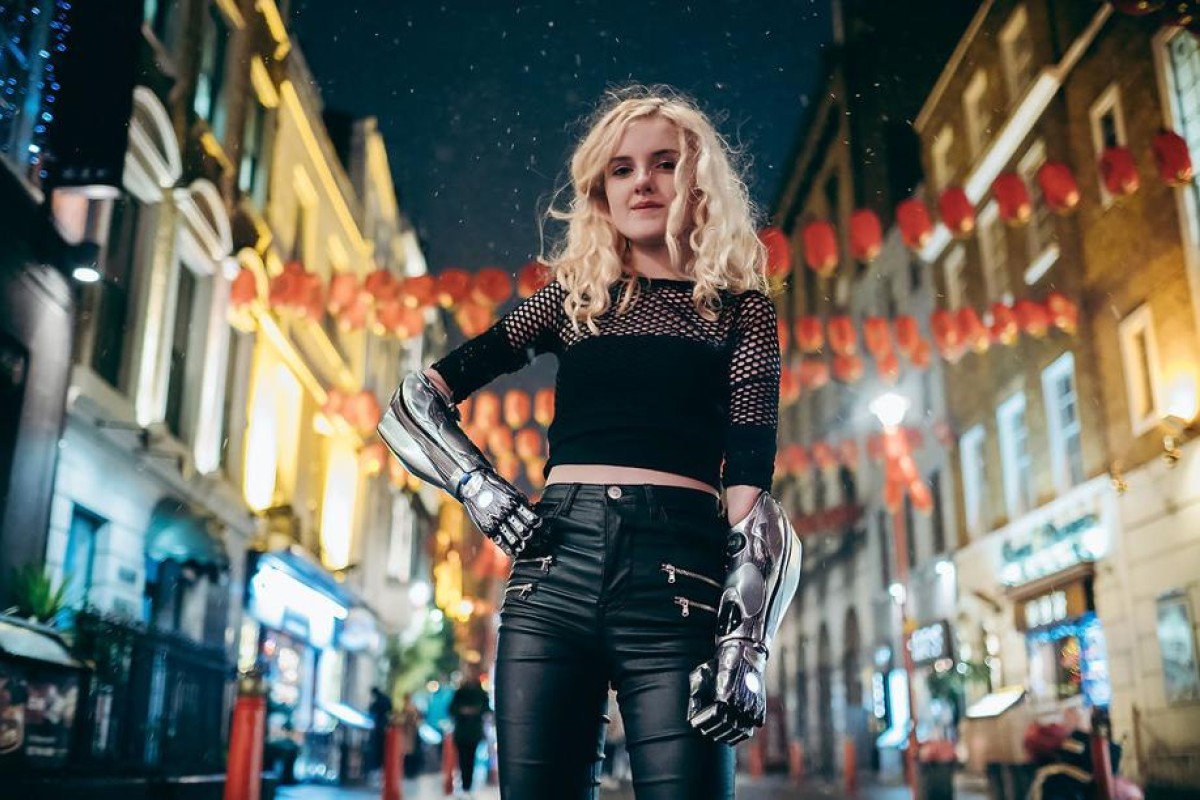
YouTuber and disability advocate Tilly Lockey balances being an influencer with being a regular teenager
One of the first children ever to receive 3D-printed bionic arms talks about how she uses social media as a force for good
 Tilly Lockey uses social media to express herself and show others with disabilities that they should accept who they are and not be afraid of judgment.
Tilly Lockey uses social media to express herself and show others with disabilities that they should accept who they are and not be afraid of judgment.At 15 months old, Tilly Lockey was given what seemed to be a death sentence. She had contracted a severe case of meningitis – a disease causing an inflammation of the membranes around her brain and spinal cord – and was given zero chance of survival.
But she did. A decade later, Tilly made headlines as the first teenager in Britain to receive 3D-printed bionic arms, and has been inspiring others with her story ever since.
In her first interview with Hong Kong media, Tilly, now 13, spoke to Young Post about how having bionic arms has transformed her life, and how social media can be used as a force for good.
This Hong Kong start up makes adorable soft toys that celebrate diversity
“It happened overnight – doctors thought I had an ear infection and told my parents that it was safe for me to go home,” says Tilly, describing an experience she has no memory of. “Later that day, I developed a rash and was rushed to the hospital, and doctors thought I wouldn’t survive.”
Against all odds, she pulled through, but doctors had to amputate her arms and toes. Before the operation, her mum promised her she’d one day have hands again. Over the years, Tilly has experimented with a variety of prosthetics, but most weren’t as realistic as she’d hoped. Worse still, many were barely functional.
“In the past, the focus has always been on looks,” she says. “However, none of the ones I owned had any function – the hands didn’t even open wide enough to hold a cup.”
Cripple Magazine gives disabled creatives a chance to showcase their skills
The world’s first bionic arm was made way back in 1993, for a British cancer patient named Robert Campbell Aird. But for a long time, it was thought impossible to use the same technology for younger amputees.
“Everyone said they could never shrink the technology small enough to make child-size hands,” says Tilly. “But by chance, Open Bionics – a British company which develops affordable bionic arms – was looking for a suitable candidate to try their 3D-printed bionic arms. After going through the application process, they picked me.”
To say that Tilly’s new arms have changed her life for the better would be an understatement.
“Now, when I go out, I feel a lot more confident – I think of them as fashion accessories rather than just medical devices,” she says.“What I love about having bionic hands is that you can have them in different colours or put lights in them, which is something people with hands can’t do,” she adds with a laugh.
While as a child, Tilly adapted to life without hands. Certain actions that others might take for granted were a challenge for her.
“I could write and draw without hands, but couldn’t do things simultaneously, such a pulling a suitcase and drinking coffee at the same time. I couldn’t make any hand gestures, either. But that was all made possible thanks to my bionic hands.”
One of the questions she’s most frequently asked is if she would change what happened to her, if given the chance. Her answer is always no.
How this HK teen with dyslexia helps others with the learning disability practice writing Chinese
“I’ve had so many amazing experiences because of it: I’m a model, a YouTube influencer, I’ve done a catwalk at a bionic arm showcase inside the White House, and even walked the red carpet for the premiere of Alita: Battle Angel wearing arms custom-made by the film’s production team.
On social media, Tilly is able to balance being a disability advocate with doing normal teen stuff, often sharing makeup tutorials on YouTube.
“To create makeup tutorials, I had to learn how to hold objects. With perseverance, I ended up learning to do makeup with only one bionic hand,” she says. “I use social media as a way to express myself, and show others with disabilities that they, too, should accept who they are and not be afraid of being judged.”
“Social media gets such a bad name, but it doesn’t have to be like that – it could be a place where we build each other up instead of tearing each other down.”
